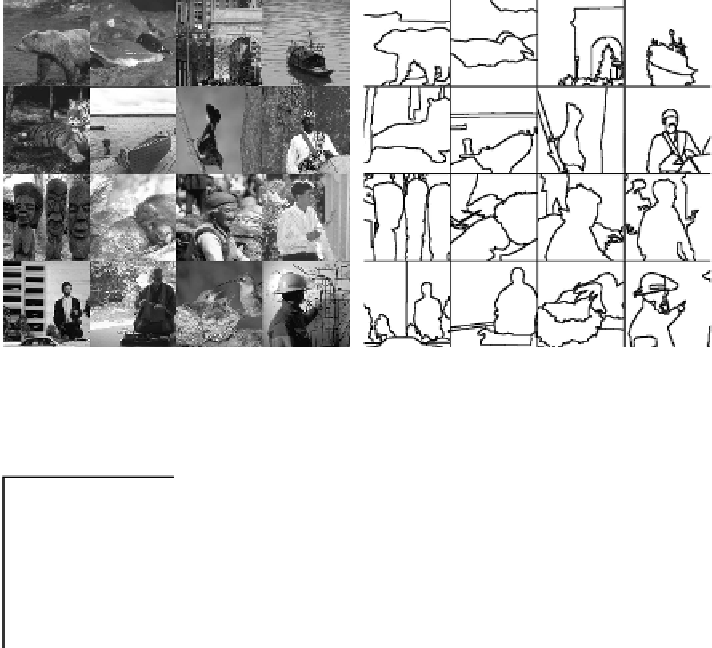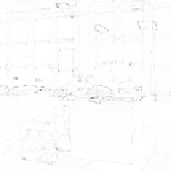Image Processing Reference
In-Depth Information
For comparison, several other training sets were used to learn rule sets for edge
detection. Figure 5.5 shows the 1314
×
×
40 inch model
board especially created for the RADIUS project, along with its associated manu-
ally generated ground truth edges. After training a single rule was learnt that was
identical to that learnt for the USF data set.
1044 image
J25
of a 40
a
b
Fig. 5.6
BSDS training data; (a) input image, (b) target ground truth image
Fig. 5.7
Edges detected using Rosin's [34] method trained on data in figure 5.6
×
1200 image mosaic created from a subset of sub-
images from the BSDS300 Berkeley Segmentation Dataset and Benchmark.
Whereas the previous two sets of ground truth were explicitly made up of edges, the
BSDS300 contains object boundaries. Since objects are defined at a higher semantic
level than low level edges, it can be seen that there is often a poor correspondence
between the two, and thus it poses a greater challenge to the cellular automaton. A
larger set of rules is learnt from this data compared to the previous training data.
The new rules consist of the single rule learnt previously plus another eight. The
effect (see figure 5.7) is to emphasise the corners more than previously, and to re-
duce the response at some edges. Since there was a less direct match between the
Figure 5.6 shows a 1200




















Search WWH ::

Custom Search